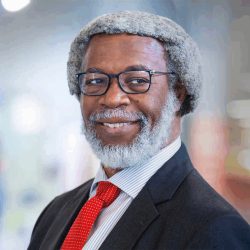Student Research Around the World
Undergraduate students become better thinkers, innovators and problem solvers by engaging in research. These experiences cultivate a depth of understanding needed to make a positive difference in the world. While some of our students conduct undergraduate research on campus or at nearby federal laboratories, others travel the world to use science to address some of the world’s most pressing problems.
Maya Amouzegar
Geneva, Switzerland
After spending a year and a half conducting high-energy experimental physics research in College Park, astronomy and physics double major Maya Amouzegar traveled to the CERN laboratory near Geneva, Switzerland, to assist in upgrading the Compact Muon Solenoid detector of the Large Hadron Collider (LHC). The world’s most powerful particle accelerator, the LHC was responsible for the Higgs boson discovery in 2012. Under the supervision of UMD Physics Professor Sarah Eno and Assistant Professor Alberto Belloni, Amouzegar helped to install scintillator tiles in the test-beam facility. “What I did is part of a bigger project aimed at creating a candidate design for a particle detector,” she says. “It is very rewarding to contribute something—no matter how big or small—to this extremely large and collaborative research effort.” Amouzegar credits being an undergraduate researcher with opening her mind to creative problem solving.
Sutton Chiorini
Tokyo, Japan
Seismology and hazard mitigation researchers have been keenly interested in Japan since the country’s 2011 earthquake in Tohoku. Geology and physics double major Sutton Chiorini spent six weeks in Japan studying the relationship between seismic data and seasonal changes like storms and ocean currents as part of the University of Tokyo Research Internship Program. Chiorini, along with University of Tokyo Department of Disaster Mitigation Science Professor Kazuki Koketsu and graduate student Loïc Viens, investigated how seasonal changes affected the circulation of seismic waves in the area. “Studying seasonal variations in vibrations caused by natural sources contributes to our understanding of the ambient seismic field in Japan and can be applied to other areas,” says Chiorini. Now back in Maryland, Chiorini is working in UMD Assistant Professor of Geology Vedran Lekic’s laboratory to better understand where and why seismic swarms—surges of earthquakes with no one shock being much larger than the rest—occur. Chiorini's Japan trip was supported by a 2015 Undergraduate Summer Research, Travel and Educational Enrichment Award from the University of Maryland College of Computer, Mathematical, and Natural Sciences Alumni Network.
Meir Friedenberg
Rehovot, Israel
Meir Friedenberg, a computer science major, studied theoretical computer science at the Weizmann Institute in Rehovot, Israel, with Weizmann faculty member Robert Krauthgamer. Friedenberg studied the math behind certain types of data compression, which involve using mathematical algorithms to reduce the storage size of a piece of data. He brainstormed and analyzed new algorithms daily. The research Friedenberg worked on, while theoretical at this stage, has the potential to allow large quantities of information to be stored using less memory. “A company doing a statistical analysis of interactions within a community would be able to examine a larger community and gain higher-quality information than previously possible,” he says. Meir's trip to Israel was supported by a 2015 Undergraduate Summer Research, Travel and Educational Enrichment Award from the University of Maryland College of Computer, Mathematical, and Natural Sciences Alumni Network.
Lynn Montgomery
Kulusuk, Greenland
From the tiny town of Kulusuk, Greenland (population: 300), atmospheric and oceanic science major Lynn Montgomery flew into the field and camped 18 days on the southeastern portion of the Greenland ice sheet to explore its hydrologic structure. “When water on the surface of the ice sheet melts during the summer due to warmer temperatures, the water can percolate down through the firn, which is porous compacted snow and ice,” Montgomery explains. This melted water creates an aquifer within the ice. Along with Lora Koenig of the National Snow & Ice Data Center and UMD Assistant Professor of Geology Nicholas Schmerr, Montgomery used seismic, radar, magnetic resonance and hydrological techniques to measure the amount of water in the aquifer and to determine how the water travels and is stored within the ice sheet. “If we understand the processes of Greenland’s hydrologic structure, even a small part such as this aquifer, we can develop solutions to slow sea level rise and understand how climate change is affecting our planet,” Montgomery says. She plans to get her Ph.D. and become a professor who studies the polar regions of Greenland, Canada, Alaska or Antarctica. “Field work provides many challenges physically and mentally,” she says, “but is a priceless learning experience.”
Written by Rachael Romano
This article was published in the Spring 2016 issue of Odyssey magazine. To read other stories from that issue, please visit go.umd.edu/odyssey.







